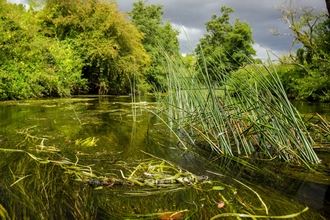©Richard Burkmarr
Azure damselfly
The Azure damselfly is a pale blue, small damselfly that is commonly found around most waterbodies from May to September. Try digging a wildlife pond in your garden to attract damselflies and dragonflies.
Scientific name
Coenagrion puellaWhen to see
May to SeptemberSpecies information
Category
Statistics
Length: 3.3cmConservation status
Common.



